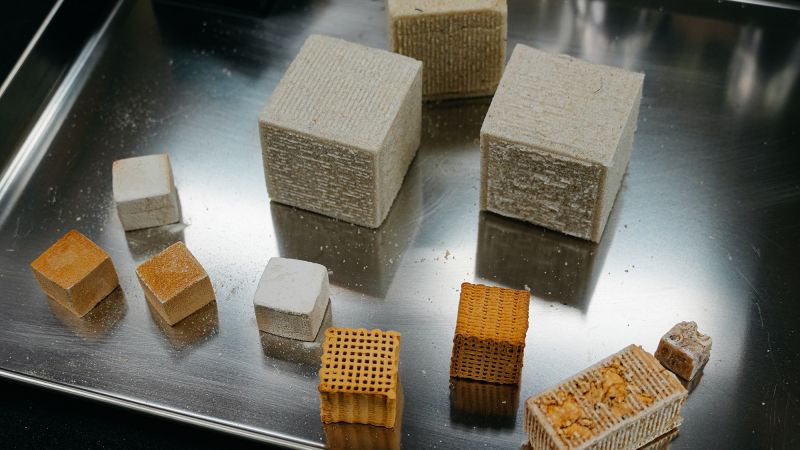The innovative concept of living in structures created from fungi and bacteria, often considered a figment of science fiction, is advancing toward tangible feasibility according to recent research findings. A dedicated research team based in Montana has made significant strides in developing a living, self-repairing building material using dense, spongy tangles of mycelium—the root-like structure that forms the backbone of fungal networks underground. This breakthrough could pave the way for sustainable alternatives to traditional construction materials, particularly cement, as highlighted by Chelsea Heveran, a senior author of the study published on April 16 in the journal *Cell Reports Physical Science*.
Cement production poses a significant environmental challenge, being responsible for approximately 8% of global carbon dioxide emissions, and producing over 4 billion metric tons annually, according to London-based think tank Chatham House. In fact, if cement production were regarded as an individual country, it would rank third globally in carbon emissions, just behind China and the United States. With this perspective in mind, Heveran, an assistant professor of mechanical and industrial engineering at Montana State University Bozeman, emphasized a vision centered around finding alternative ways to harness biological processes in construction.
The research team sought to harness the capabilities of bacteria that produce calcium carbonate—a compound found in equipment ranging from coral to eggshells. By integrating these bacteria into the fungal mycelium, which served as a structural scaffold, the team was able to employ a process known as biomineralization. This process effectively hardened the flexible mycelium into a rigid, bone-like material. Heveran pointed out that while prior research has explored biomineralizing various substances into building materials, their approach uniquely aims to prolong the viability of the bacteria, which has traditionally been a key challenge. They accomplished this by utilizing the robust mycelium, enabling the bacteria to thrive longer and intrinsically link to the fungal framework.
During their experiments, the researchers utilized the fungus *Neurospora crassa* and the bacteria *Sporosarcina pasteurii*. By killing the fungus and introducing the microbes, the team achieved material stiffness more rapidly, as the bacteria formed crystalline structures around the fungal threads after metabolizing urea, effectively acting as nutrients for the bacteria. Unlike previous biomineralized materials—which were only functional for a few days—this team managed to keep the microbes active for at least four weeks, with the potential for extending this timeframe to months or even years.
Excitingly, the researchers are contemplating the future of this technology—envisioning applications where the living building materials could actively respond to environmental conditions, such as indicating poor air quality. These leaps in biological engineering could redefine building materials, taking sustainability to new heights. However, significant tests remain to ensure that the performance and safety of these living materials are adequate for construction needs. Avinash Manjula-Basavanna, a bioengineer from Northeastern University in Boston, cautioned that while these experiments show promise, they often reflect only small-scale material properties and must be compared to the robust strength required in construction.
Despite current limitations, mycelium’s unique properties—such as its flexibility—provide a promising foundation for further exploration. Its natural ability to form vascular-like structures within construction elements opens new avenues for design but also poses challenges, as integrating such structures may compromise material strength. Future studies may focus on smaller constructible designs—possibly single-story buildings—in the foreseeable horizon, while also addressing health and safety concerns associated with fungi.
As Heveran’s team forges ahead to explore these possibilities, they are aligned with multiple government entities investigating living building materials. While the immediate usage of mycelium-based bricks in conventional construction is not expected soon, the long-term implications of such innovations could revolutionize construction paradigms, especially for infrastructure in underserved communities or even in extraterrestrial environments. The potential societal benefits underscore the importance of continued research in building sustainable biosolutions.



